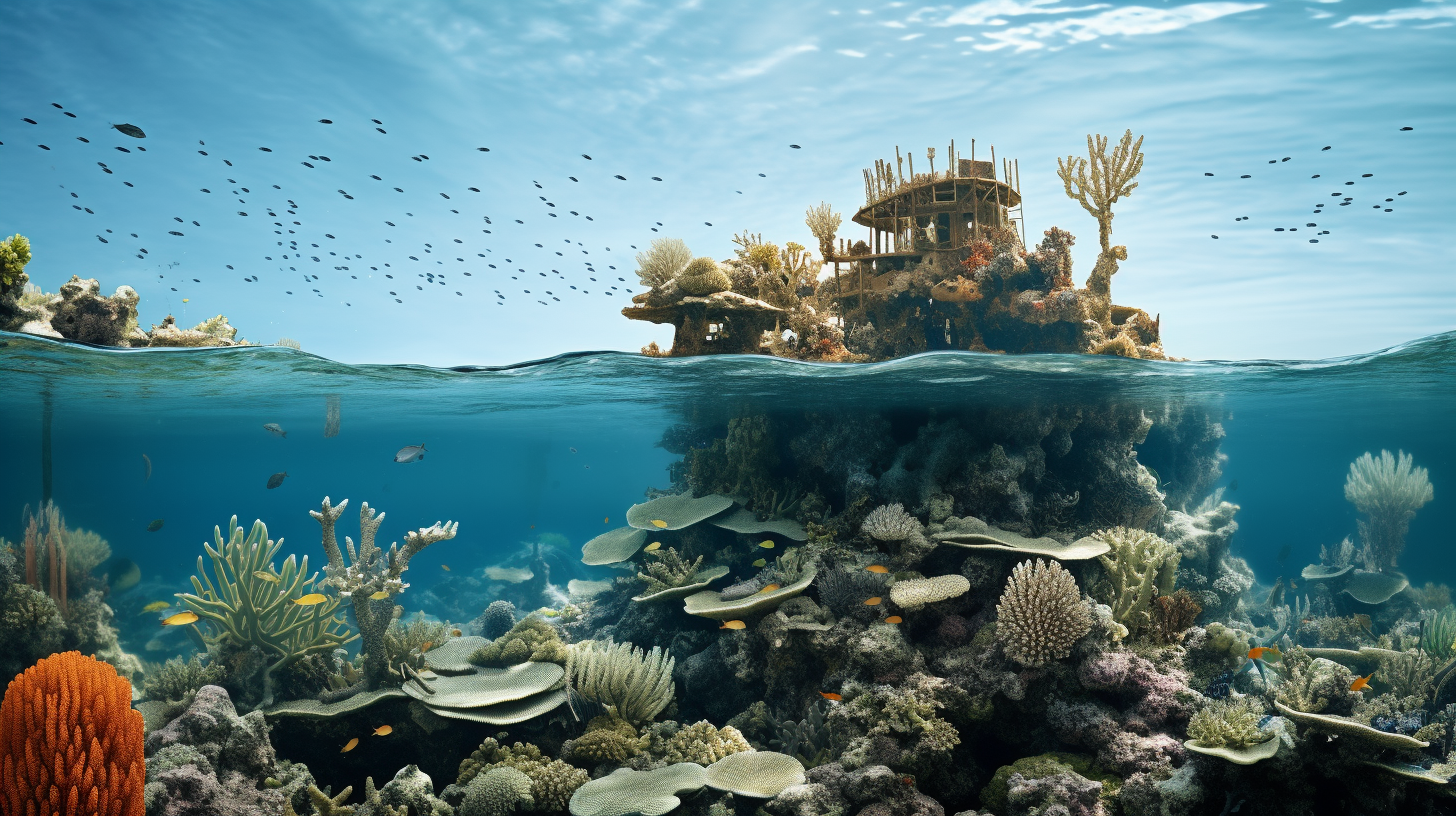Amidst the haunting melodies of desolation that now dominate our planet’s narrative, there exist delicate havens, defying the dystopian world we’ve woven—a paradox that glimmers beneath the waves. These are the coral refuges, oceanic Edens where the symphony of life persists in soft, pastel defiance against a backdrop that echoes calamity. Like bright jewels set in a crown of despair, they hold onto the beauty of a world that might have been.
Coaxed into existence by the meticulous labor of countless tiny architects, these corals are more than mere rock; they are sprawling metropolises, a spectrum of color and vitality. But underneath their vibrant façade, an unsettling truth lingers—the specter of an uncertain future haunts these bastions of marine biodiversity.
Recall, if you will, the ‘Abyssal Architects,’ the deep-sea creatures that shaped ecosystems around hydrothermal vents. Their resilience is mirrored here, albeit in a contrasting painting of life—a tapestry of life forms dancing in delicate equilibrium with their slowly morphing environment. The existence of coral reefs might appear to be a beacon of hope, a rebellion against the end times we prepare for—yet their reality is as fragile as a spider’s silk thread caught in a storm.
It is in the arms of these coral citadels where we find remarkable species, carrying out their day-to-day amidst the garden of the sea. Fish of iridescent scales whisper tales of ecological opulence, while crustaceans skitter along the seabed, painting a lively mosaic that lies in sharp contrast to the surface world’s bleakness.
But this glittering illusion belies the truth.
The coral refuges are beleaguered—their foundations eroded not just by the catastrophic consequences of climate change but by a pantheon of perils. Ocean acidification, bleaching events that strip away the very essence of vitality that defines these ecosystems, and the relentless advance of industrialization compromising the sanctity of our world’s last sanctuaries.
Scientists labor, as though with pen and ink, to scribe the dirges and praises of these threatened havens. Their studies lament the potential collapse of these ecosystems, even as they marvel at the sheer tenacity of life’s grip. Within these studies lie tales of adaptation, where certain coral species, sculpted by the harsh hand of environmental change, cling to survival in warmer waters. Yet, these are but ephemeral victories in a war that is all but lost.
Do these resplendent oases depict the irony of hope within a hopeless world, or are they simply the last echoes of a symphony destined to be swallowed by silence?
What is certain, is that these oceanic Edens are on borrowed time. Whether they are beacons or mere halos atop an already sealed coffin, they serve a reminder of what was, what could have been, and what is slipping like grains of sand through our collective fingers. They are, to risk the allegory, a Noah’s Ark with no destination in sight—a spectral voyage with only ghosts aboard.
Let this story serve as both a celebration and a eulogy—a testament to the resolute beauty of the coral refuge, and a dirge for the shrouded future they might not escape.
